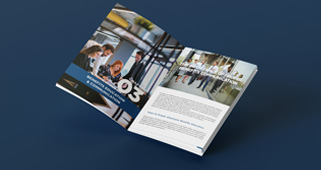Health insurance is a critical component of any employee benefits package, and choosing the right type of plan can significantly impact both your company’s finances and employee satisfaction. One emerging trend in health insurance is level-funding, a hybrid model that combines elements of traditional fully-insured plans and self-insured plans. As companies search for cost-effective and flexible health insurance solutions, level-funding is gaining traction. But is it right for your company? This comprehensive blog explores the intricacies of level-funding, its benefits, risks, and considerations to help you make an informed decision.
Understanding Level-Funding
What is Level-Funding?
Level-funding is a health insurance arrangement where an employer pays a set (or “level”) monthly fee that covers estimated claims, administrative costs, and stop-loss insurance. It offers the predictability of a fully-insured plan with the potential cost savings and flexibility of a self-insured plan.
How Does Level-Funding Work?
- Monthly Premiums: Employers pay a fixed monthly premium, which is divided into three parts:
- Claims Fund: A portion is set aside to pay for employees’ medical claims.
- Administrative Fees: Covers the insurance carrier’s costs for managing the plan.
- Stop-Loss Insurance: Protects the employer from unexpectedly high claims by covering claims that exceed a certain threshold.
- Claims Processing: The insurance carrier processes and pays claims from the claims fund. If claims are lower than expected, the employer may receive a refund or credit. If claims exceed the fund, stop-loss insurance kicks in to cover the excess.
- End-of-Year Reconciliation: At the end of the plan year, the insurer reconciles the actual claims against the projected claims. Surpluses may be refunded or carried forward, and deficits are covered by stop-loss insurance.
Comparison with Other Insurance Models
- Fully-Insured Plans: The employer pays a fixed premium to the insurer, who assumes all the risk and responsibility for paying claims.
- Self-Insured Plans: The employer assumes the risk and pays for claims directly, typically using a third-party administrator (TPA) to manage the plan. Stop-loss insurance is often purchased to limit liability.
Level-funding strikes a balance between these models, offering predictability with the potential for savings.
Benefits of Level-Funding
Cost Control and Savings
- Predictable Costs: The fixed monthly premiums make budgeting easier, providing the predictability of a fully-insured plan.
- Potential Refunds: If actual claims are lower than projected, the employer may receive a refund or credit, reducing overall costs.
- Tax Advantages: Unlike fully-insured plans, where premiums include state taxes, level-funded plans may have tax advantages, as self-funded plans are generally exempt from state insurance premiums taxes.
Flexibility and Customization
- Plan Design: Employers have more flexibility in designing benefits tailored to their workforce’s needs, which can improve employee satisfaction and retention.
- Stop-Loss Insurance: Employers can customize stop-loss coverage to suit their risk tolerance and financial situation, providing a safety net against catastrophic claims.
Transparency and Data Access
- Claims Data: Employers gain access to detailed claims data, enabling them to identify cost drivers and implement targeted health initiatives.
- Wellness Programs: With insights into healthcare usage, companies can develop wellness programs to address specific health issues, potentially reducing future claims.
Employee Satisfaction
- Comprehensive Coverage: Employees benefit from a well-designed plan that meets their healthcare needs, enhancing overall satisfaction.
- Wellness Initiatives: Wellness programs and preventive care options improve employee health and productivity, fostering a healthier work environment.
Risks and Considerations
Financial Risk
- Claims Volatility: While stop-loss insurance mitigates high claims, the employer still assumes some risk if claims exceed projections but stay within the stop-loss threshold.
- Cash Flow: Employers must ensure they have sufficient cash flow to cover monthly premiums and potential claims up to the stop-loss limit.
Administrative Complexity
- Plan Management: Level-funding requires more administrative effort than fully-insured plans, as employers must manage the claims fund and work with TPAs and insurers.
- Compliance: Employers must navigate complex regulations related to self-insured plans, including reporting requirements and adherence to the Employee Retirement Income Security Act (ERISA).
Market and Provider Selection
- Insurance Carrier Selection: Choosing a reliable insurance carrier or TPA is crucial to ensure efficient claims processing and accurate reporting.
- Stop-Loss Coverage: Evaluating stop-loss insurance options and selecting the right coverage requires careful consideration and expertise.
Employee Communication
- Transparency: Employers must communicate the benefits and risks of the level-funded plan clearly to employees, ensuring they understand how the plan works.
- Change Management: Transitioning to a level-funded plan from a fully-insured or self-insured model may require change management strategies to address employee concerns and expectations.
Is Level-Funding Right for Your Company?
Assessing Your Company’s Profile
- Company Size: Level-funding is typically more suitable for small to mid-sized companies with stable, predictable claims. Large companies might benefit more from fully self-insured plans due to economies of scale.
- Financial Stability: Companies with stable cash flow and a strong financial position are better equipped to handle the potential volatility in claims costs.
- Risk Tolerance: Assess your company’s willingness to assume some financial risk in exchange for potential savings and greater control over health benefits.
Evaluating Employee Demographics
- Health Profile: Understanding your employees’ health profile is critical. Companies with relatively healthy employees may benefit more from level-funding due to lower anticipated claims.
- Demographic Factors: Age, family status, and other demographic factors can influence healthcare usage and costs. A younger, healthier workforce may see more savings with level-funding.
Analyzing Current Health Plan Performance
- Claims History: Review your company’s claims history to understand past trends and project future costs. This analysis helps in determining the potential savings and risks associated with level-funding.
- Employee Feedback: Gather feedback from employees about their satisfaction with the current health plan and their needs and preferences. This insight can guide the design of a level-funded plan.
Consulting with Experts
- Insurance Brokers and Consultants: Engage with experienced insurance brokers or consultants who can provide valuable insights and help evaluate if level-funding is the right fit for your company.
- Legal and Financial Advisors: Consult with legal and financial advisors to understand the regulatory and financial implications of switching to a level-funded plan.
Case Studies: Success and Challenges
Success Stories
- Tech Start-Up: A tech start-up with 150 employees transitioned to a level-funded plan, resulting in significant savings and refunds due to lower-than-expected claims. The access to claims data allowed the company to implement targeted wellness programs, further reducing healthcare costs.
- Manufacturing Company: A mid-sized manufacturing company with 300 employees benefited from the flexibility of a level-funded plan, customizing benefits to meet the diverse needs of its workforce. The company also utilized claims data to negotiate better rates with healthcare providers, enhancing overall plan value.
Challenges and Lessons Learned
- Retail Business: A small retail business faced challenges with level-funding due to fluctuating claims and inadequate cash flow to cover unexpected costs. The company had to adjust its stop-loss coverage and improve cash flow management to stabilize its health benefits program.
- Non-Profit Organization: A non-profit organization with limited administrative resources struggled with the complexity of managing a level-funded plan. Partnering with a reliable TPA and investing in administrative support helped mitigate these challenges and streamline plan management.
Steps to Implementing Level-Funding
1. Conduct a Feasibility Study
- Analyze Claims Data: Evaluate your company’s historical claims data to project future costs and assess the potential savings with level-funding.
- Financial Analysis: Conduct a financial analysis to ensure your company can manage the cash flow requirements and potential risks associated with level-funding.
2. Choose the Right Partners
- Insurance Carrier/TPA: Select a reputable insurance carrier or TPA with experience in managing level-funded plans and providing robust support services.
- Stop-Loss Insurer: Carefully evaluate stop-loss insurance options to choose coverage that aligns with your company’s risk tolerance and financial capabilities.
3. Design the Plan
- Benefit Structure: Design a benefit structure that meets the needs of your employees while managing costs effectively.
- Wellness Programs: Incorporate wellness programs and preventive care initiatives to promote employee health and reduce future claims.
4. Communicate with Employees
- Education and Training: Educate employees about the new plan, its benefits, and how it works. Provide training sessions and resources to ensure a smooth transition.
- Ongoing Communication: Maintain open communication channels to address employee questions and concerns, ensuring they feel supported and informed.
5. Monitor and Adjust
- Claims Monitoring: Regularly monitor claims data and financial performance to identify trends and adjust the plan as needed.
- Continuous Improvement: Continuously seek feedback from employees and make improvements to enhance the plan’s effectiveness and employee satisfaction.
Level-funding presents a compelling option for companies seeking a balance between cost control, flexibility, and comprehensive health benefits. By offering predictable costs, potential savings, and access to valuable claims data, level-funding can provide significant advantages over traditional fully-insured and self-insured plans.
However, it is not without risks and challenges. Companies must carefully assess their financial stability, risk tolerance, and administrative capabilities before making the switch. Consulting with experts, conducting thorough analyses, and involving employees in the decision-making process are crucial steps to ensure a successful transition to a level-funded health plan.
Benely is a leading brokerage solutions that shops the entire marketplace for their clients, including level-funding options. Ultimately, the decision to adopt level-funding should be based on a comprehensive evaluation of your company’s unique needs and circumstances. By understanding the intricacies of level-funding and considering the benefits and risks, you can make an informed choice that supports your company’s financial health and employee well-being.
References
- America’s Health Insurance Plans (AHIP). (2021). Survey: Level-Funding and Self-Funded Health Plans. Retrieved from AHIP
- Employee Benefit Research Institute (EBRI). (2021). The Pros and Cons of Level-Funding Health Insurance Plans. Retrieved from EBRI
- Society for Human Resource Management (SHRM). (2021). Level-Funding: A Viable Option for Small to Mid-Sized Employers. Retrieved from SHRM
- National Association of Health Underwriters (NAHU). (2021). Level-Funding: Balancing Cost and Risk. Retrieved from NAHU
- Kaiser Family Foundation (KFF). (2021). Employer Health Benefits Annual Survey. Retrieved from KFF






